How to Properly Store Open Wine Bottles | [WSET-3 Reviewed]
— Londoner contributed to this post; you can read more about her on the About page.–
Tired of your open bottle of wine losing its luster? This no-nonsense guide will show you how to properly store open wine bottles, ensuring every pour remains as delightful as the first. Expect to learn simple, effective ways to extend your wine’s life and keep its flavors intact, so you can relish each glass at your own pace – be it a sparkling wine or sensitive red wines, you can extend the life of your favorite wine after opening it by following these simple storage tips.
Key Takeaways
Re-corking or using alternative bottle closures right after pouring minimizes oxygen exposure, which is essential for preserving the wine’s aroma and taste.
Different types of wine require specific temperatures for optimal preservation post-opening, with sparkling wines needing 50-55°F, white and lighter reds at around 50-55°F, and full-bodied reds slightly cooler than room temp at 63°F.
Wine preservation systems that employ vacuum pumps or inert gases like argon can significantly extend the life of an opened bottle by reducing exposure to oxidation.
Sealing the Aroma: Re-Corking Your Open Wine Bottle
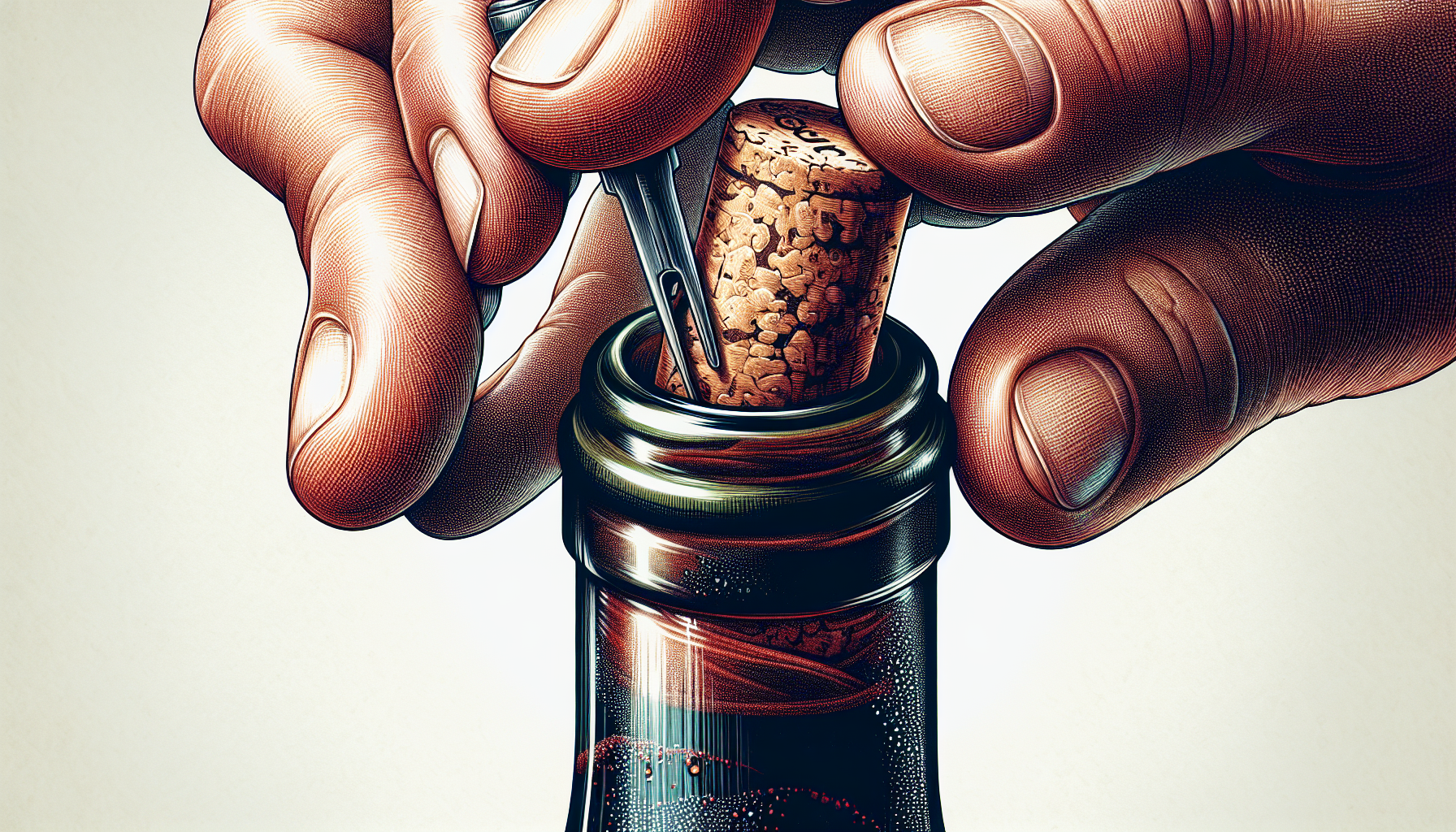
The aroma of your favorite wine – a robust red wine or a whimsical white, is only half of the experience. But once you’ve popped the cork, the clock starts ticking. The culprit? Oxygen. Exposure to oxygen is the greatest threat to preserving wine as it causes oxidation, altering the taste, increasing acetic acid levels, and flattening the flavors. So, how do we combat this invisible enemy? One effective strategy is to re-cork the bottles right after pouring to limit air exposure, keeping the wine fresh and preserving its quality.
Now, you might be tempted to jam the cork back into the bottle any which way, but there’s a method to the madness. The right way to re-cork a bottle is by gently twisting the cork and pushing it back into the neck of the bottle, with the smaller end going in first. This technique ensures a snug fit and keeps the oxygen at bay.
But what if you’ve misplaced the original cork, or it’s not resealable? Not to worry. A suitable alternative such as a rubber stopper or one of many different bottle closure systems can serve as an effective shield against oxygen, keeping the wine’s flavor fresh for a longer period, ensuring that you can enjoy that open bottle of Pinot Noir tomorrow.
Temperature Matters: Cooling Down Your Opened Wine
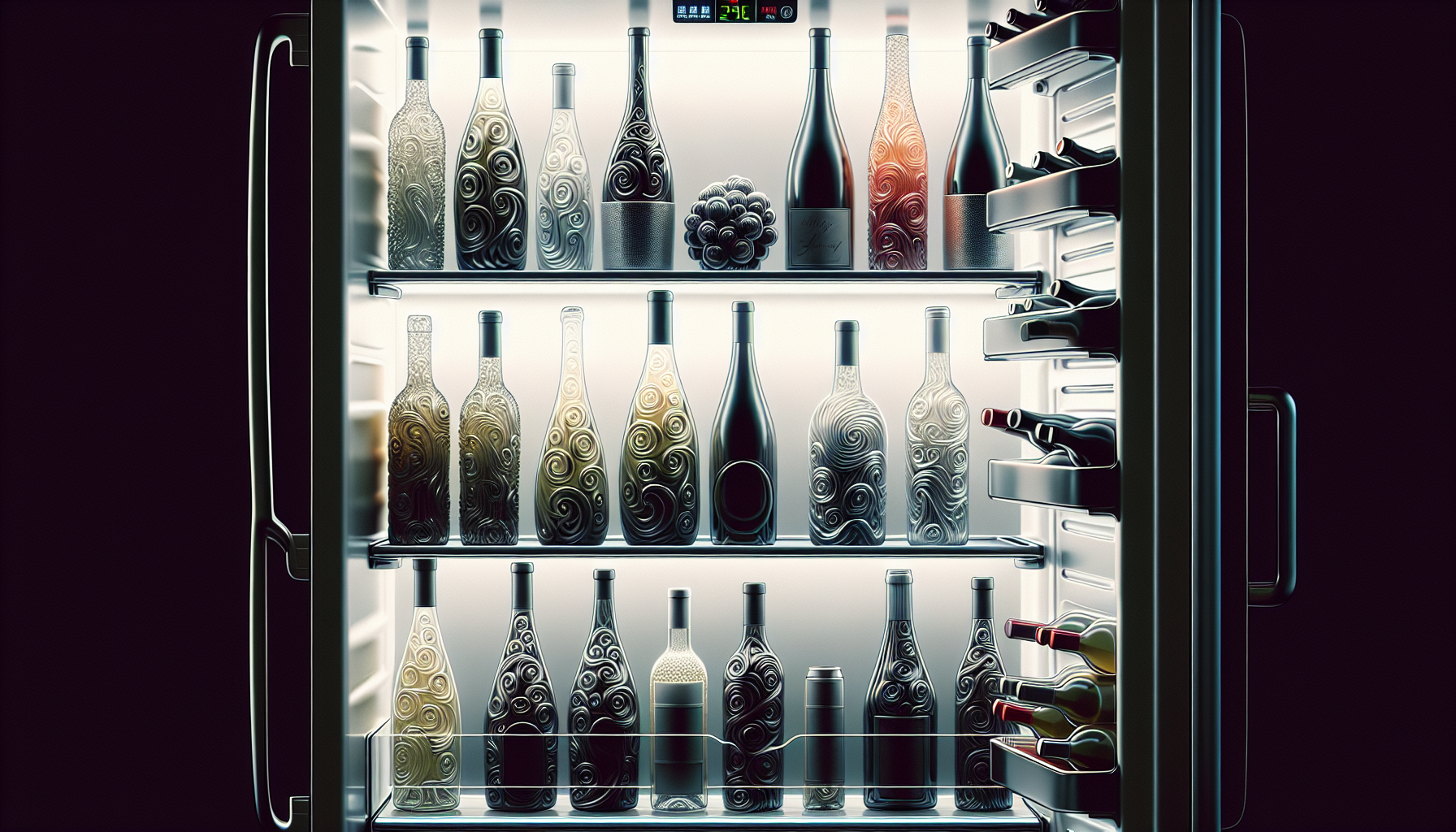
Just like a gourmet meal, a bottle of wine is best served at the right temperature. As far as preserving the freshness of your opened wine goes, generally, the cooler, the better. Once opened, you can refrigerate wine, ensure you store the wine upright. This helps slow down the oxidation process, significantly extending the wine’s life. However, before you start clearing space in your refrigerator, remember that the needs of different wines vary. The most sensitive red wines will require a different temperature than a white wine.
The ideal temperature for storing sparkling wine is between 50°F to 55°F, while red and white wine have different temperature needs, typically 45°F for white and 55°F for red. To maintain their taste, aroma, and color, opened red wine bottles should be stored in a cool, dark environment due to their sensitivity to temperature fluctuations and light exposure. So, next time you pop a bottle, remember to cool your wine after opening!
White Wines and Lighter Reds: Chill for Freshness
The world of white wines and lighter reds is filled with crisp flavors and delicate aromas. Appropriate chilling is the key to keeping these wines at their peak once opened. Store wine – light and medium reds such as Pinot Noir and Merlot at temperatures close to 55 degrees Fahrenheit; do not exceed 60 degrees to maintain freshness.
Rosé wines, with their subtle sweetness and tantalizing tartness, require cooler storage conditions, ideally between 50 and 55 degrees Fahrenheit. This temperature range helps preserve their unique nuances and vibrant characters.
White wines, with their varied profiles ranging from zesty citrus to rich oaky notes, also thrive under cooler storage conditions, ideally between 50 and 55 degrees Fahrenheit. By maintaining these temperatures, you can serve wines that are as crisp and refreshing as the day you opened them.
Full-Bodied Reds: Slightly Cooler Than Room Temp
For those who favor the bold complexity of full-bodied reds, storage temperature plays an important role in preserving their rich flavors and robust structure. For wines like Cabernet Sauvignon, Malbec, or Zinfandel, the storage temperature should ideally be around 63 degrees Fahrenheit. This temperature allows these wines to maintain their intricate flavor profiles without compromising their structure.
Darker full-bodied reds like Shiraz can tolerate a slightly higher temperature, approximately 66 degrees Fahrenheit. This slightly warmer storage temperature complements the dark fruit and spice notes of these wines.
Keep in mind that storing full-bodied red wines slightly below room temperature helps retain their complex flavors without modifying their structure. So, next time you uncork a bottle of your favorite red, remember it likes to stay cool, just like you.
Orientation and Location: The Positioning of Your Wine Bottles
While wine connoisseurs often focus on temperature and re-corking, the position of your wine bottles is an equally important aspect of wine preservation. When it comes to storing open wine bottles, think vertically. Storing your open bottles upright helps minimize the wine surface area exposed to air, thus slowing down the oxidation process. So, if you’ve been storing your open bottles horizontally, it’s time for a change!
The location of your wine storage also plays a vital role in preserving the wine’s quality. Direct light, especially sunlight, can play havoc with your wine, leading to discoloration and damage to its flavors and aromas. Wine should be kept in a dark place out of direct sunlight as this helps to slow down chemical processes. A wine cooler, a cellar, or even a dark corner in your kitchen is an ideal storage location.
And remember, old wine is like a good perfume – delicate and sensitive to other smells. It is important to store opened bottles away from strong odors to preserve the delicate flavors of wine. So, avoid the onion bin or the spicy curry in the refrigerator!
Keeping Open Wine Fresh: Utilizing Wine Preservation Systems
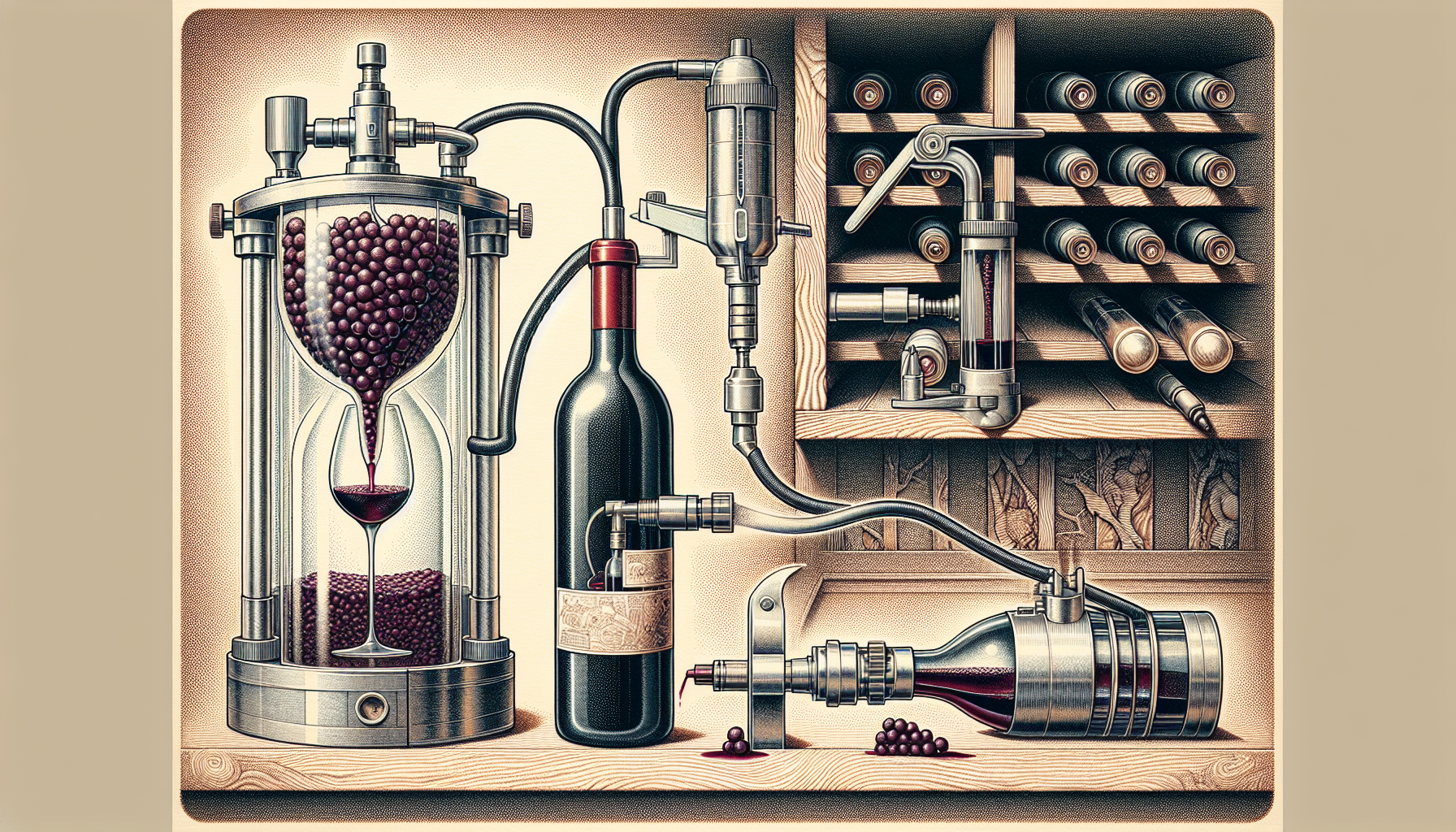
The quest to keep open wine fresh often drives wine enthusiasts towards more advanced solutions, like wine preservation systems. A wine preservation system is a very useful tool to maintain the freshness and quality of an opened bottle of wine. But what exactly are these systems, and how do they work?
There are two primary methods for preserving wine: one involves a vacuum pump, while the other uses inert gas. These systems help maintain the quality and freshness of the wine after opening. A vacuum pump removes the oxygen from the bottle, reducing the chance of oxidation. However, while these systems can help preserve wine, their effectiveness in maintaining wine quality varies.
An inert gas wine preservation system inserts an inert gas like argon gas to create a protective layer over the wine. The Coravin system, for instance, uses argon gas to preserve the freshness of wine by piercing the cork and replacing the extracted wine with inert gas. Such a system can preserve wine for up to a week after opening.
These systems offer innovative ways to store wine, ensuring your favorite wines taste great long after the bottle has been opened, thanks to the wine preserver technology.
Smart Storage Solutions for Sparkling Wines

Ah, the effervescent charm of sparkling wine! Keeping the bubbles bubbling in an open bottle can be a challenge. But with the right storage solutions, you can keep your bubbly, well, bubbly for longer. The most effective tool for preserving sparkling wine is a Champagne stopper. This simple device can maintain effervescence and freshness once the wine bottle is opened.
A Champagne stopper works to create an airtight seal, preventing the escape of bubbles and keeping the wine fresh for 2-3 days. So, even if you don’t finish the whole bottle in one sitting, there’s no need to worry about losing that delightful fizz.
Once you’ve sealed the bottle with a Champagne stopper, the subsequent step is to store it correctly. Store the bottle upright in a stable part of the refrigerator. This will keep the temperature consistent, preserving the wine’s effervescence and flavor. So, keep your bubbly at its best with these smart storage solutions.
Creative Uses for Leftover Wine: Don’t Waste a Drop
If you’re accustomed to pouring undrunk old wine down the drain, it’s time to reconsider. This extra wine can be a secret ingredient in your kitchen, adding depth and flavor to a variety of dishes. Here are some ideas for using that extra wine:
Use red wine to create a tasty basic vinaigrette dressing
Add red wine to stews to add complex flavors
Use red wine to prepare rich pan sauces for meats
But the culinary creativity doesn’t stop there. You can transform leftover red wine into a robust homemade red wine vinegar to use for cooking and dressings. Or how about crafting cocktails such as Kalimotxo or creating warming mulled wine for unique beverage options?
And for those with a sweet tooth, wine isn’t just for drinking. Here are some ways to use wine in cooking and baking:
Enhance the flavor of jams
Bake desserts like red wine chocolate cake
Make dry riesling wine gummies for unique wine-infused confections
Poach pears or seafood in wine, infusing the food with nuanced flavors
And if you still have some wine left, freeze it in ice cube trays or larger containers for future cooking uses.
With so many creative uses for leftover wine, there is no need to waste a single drop!
Navigating Half Bottles and Smaller Portions
Size does play a role when it comes to storing a bottle of wine once it has been opened. If you often find yourself with half a bottle of wine left, consider using half bottles or small bottles to store any unused wine. Transferring the remaining wine into a smaller bottle reduces the wine’s exposure to oxygen, as there is less room for air, which helps maintain the quality.
Rebottling wine in a smaller airtight container is a practical method to limit the wine’s contact with air if a bottle stopper or other closure devices are not used. This can be especially helpful if you don’t own an expensive preservation system. By decanting into smaller bottles and refrigerating them under a screw cap, you can keep your wines fresh.
Half bottles or splits can be purchased online or, though less commonly, at supermarkets. So, next time you’re left with some wine, remember, smaller can be better – or consider having a few bottles on hand!
Shelf Life and Sensitivity: Understanding Varietal Differences
The shelf life of opened wine doesn’t follow a one-size-fits-all rule. Different wines have different lifespans once opened, with lighter wines expiring faster than darker varieties. But exactly how long can you expect your opened bottle to last?
After opening, wines typically last:
Sparkling wines: 1-2 days
Light white and rosé wines: 4-5 days
Rich white wines: 3-5 days
Red wines: 3-6 days
Dessert wines: 3-7 days
Port: 1-3 weeks
It’s important to note that organic wines, due to the lack of sulfites, may experience accelerated aging and are generally best consumed within 3-5 days of opening.
To avoid freezing or overheating of wines, it’s ideal to maintain a storage temperature of around 55 degrees Fahrenheit for both the short and long term. So, whether you’re savoring a delicate white or a full-bodied red, understanding the varietal differences can help you get the most out of every sip.
The Last Pour
In conclusion, mastering the art of wine preservation requires the right techniques, from re-corking promptly and maintaining the right temperature to using specialized preservation systems and smart storage solutions. Remember, different wines have different needs, and knowing how to cater to these needs can make all the difference in maintaining the freshness and flavor of your favorite wines. So, the next time you pop open a bottle, make every drop count.
Frequently Asked Questions
Why is it important to re-cork an open wine bottle?
It is important to re-cork an open wine bottle to limit air exposure and preserve wine quality, as oxygen can cause oxidation and alter the taste.
What is the ideal storage temperature for different wines?
The ideal storage temperature varies for different wines. Sparkling wine should be stored between 50°F to 55°F, white wines and rosé wines around 45°F, and red wines at 55°F.
What are the different types of wine preservation systems?
The two fundamental types of wine preservation systems are vacuum pumps and inert gas preservation systems, each serving to remove oxygen from the bottle or insert an inert gas like argon to protect the wine.
How can you preserve sparkling wine?
Use a Champagne stopper to maintain its effervescence and store the bottle upright in the refrigerator. This will help preserve the bubbles and the quality of the wine.
What are some ways to use leftover wine?
You can use it to make vinaigrette dressing, flavor stews, prepare pan sauces for meats, transform it into vinegar, craft cocktails, or enhance the flavor of jams and desserts. Try experimenting with these suggestions to make the most of your leftover wine.


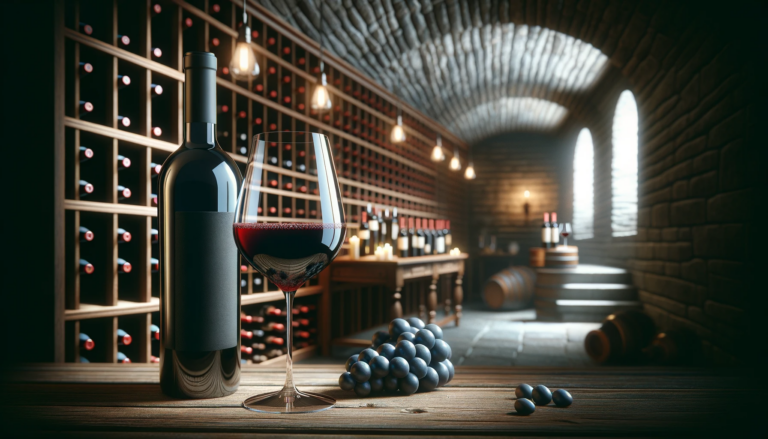
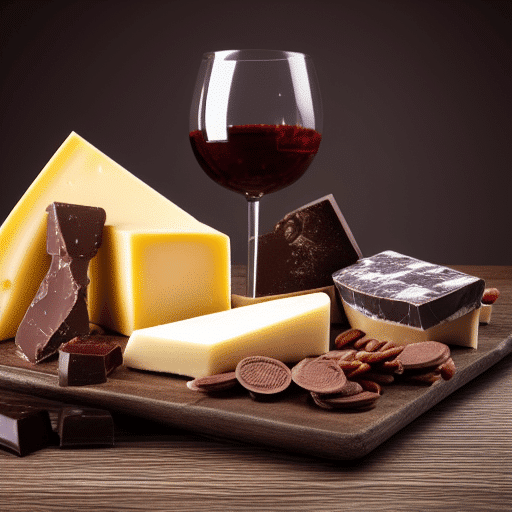
![What Role Does Acidity Play in Wine Quality? | [WSET4]](https://grapeandbarrel.com/wp-content/uploads/2024/04/963816d0-c0a0-4b5b-9621-2a00f01c7e5d-768x439.png)

